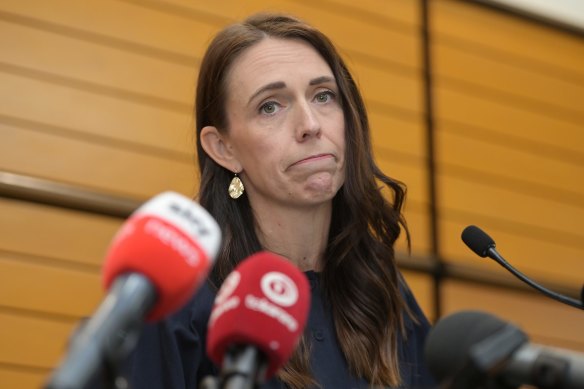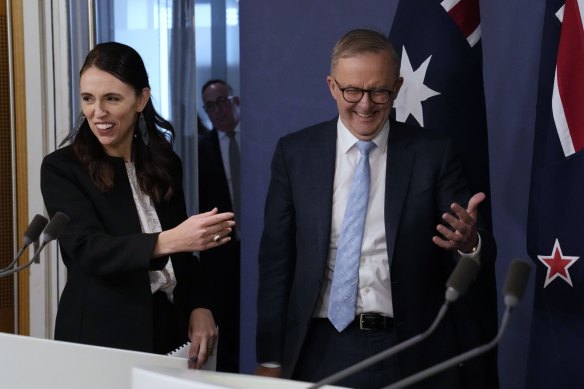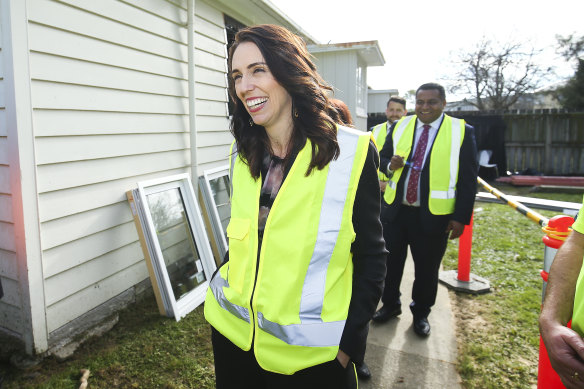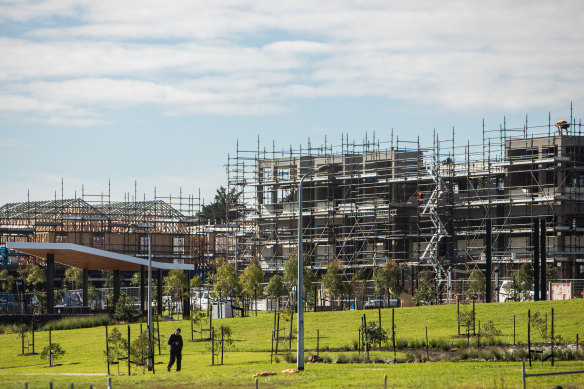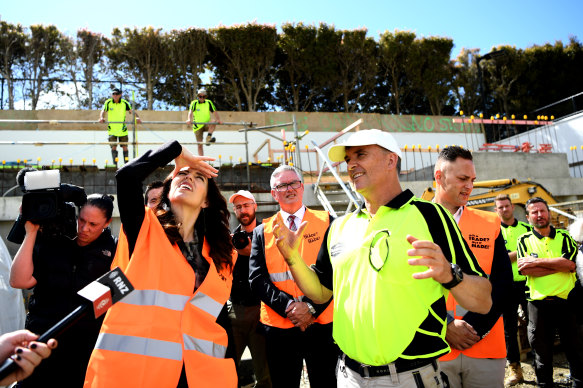The big promises Jacinda didn’t keep

Jacinda Ardern has been regarded as a global icon of progressive politics for so long now that it is almost jarring to be reminded how she managed to bring the New Zealand Labour party back to power in 2017 after nine years in opposition.
At that year’s election Labour won only 38 per cent of the vote, behind the National Party’s 44 per cent.
Jacinda Ardern announces her resignation.Credit:Getty
Ardern was only able to form government because she was prepared to form a coalition with New Zealand First by agreeing to make Winston Peters her deputy, the Kiwi equivalent of Pauline Hanson’s One Nation.
On the face of it the pair were strange political bedfellows until you remember that Ardern was promising if she were elected Labour would cut immigration by 30,000 people from over 70,000 a year.
Her other policy offerings to New Zealanders were not extensive but the most important was a promise to tackle New Zealand’s housing crisis because as she said as opposition leader, “Too many families are missing out on buying homes”.
That sounds familiar.
New Zealand Prime Minister Jacinda Ardern and Prime Minister Anthony Albanese.Credit:RICK RYCROFT
Given both the ALP and Liberals recognise housing affordability is a critical issue at home, they could do worse than learn the lessons from Ardern’s attempts to increase home ownership.
It was a rollercoaster ride.
New Zealand’s 2018 census, taken six months after Labour came to power, showed that at 64.5 per cent, home ownership rates were at their lowest level since 1951.
In the five years she was in office Ardern was unable to reverse that slide.
Jacinda Ardern was unable to improve New Zealand’s housing crisis.Credit:Getty
This year it is predicted to drop to 63.6 per cent.
There were many reasons for this failure but prominent among them was an increase in net migration.
Despite pledging to cut the number of migrants, Labour actually increased them.
In the year to October 2017 – the month Ardern took office – net migration was 55,000.
In December 2019, the last month before the COVID pandemic struck it was 72,000.
If Ardern had been able to meet her promise to increase the affordable housing supply, perhaps this wouldn’t have mattered so much.
KiwiBuild, a $NZ2 billion scheme, was meant to deliver 100,000 affordable homes within a decade.
Five years in and only 1365 have been built.
KiwiBuild, a $NZ2 billion scheme, was meant to deliver 100,000 affordable homes within a decade.Credit:Scott McNaughton
Worse, data from the New Zealand housing department shows that in the first half of last year it was actually demolishing homes at a faster rate than it was building them.
The inevitable consequence of the failure of supply to meet increased demand was the turbocharging of house prices. This was fuelled further by the New Zealand Reserve Bank’s low interest rates and removal of restrictions on the amount purchasers could borrow against a property.
Having a land tax or stamp duty might have acted as a brake on investors piling in, but New Zealand has neither.
And pile in they did. Between 2019 and the end of 2021 property prices rose by 50 per cent.
By 2021, following Ardern’s successful re-election, the situation was described by Arthur Grimes, professor of public policy at Victoria University of Wellington, as probably “the biggest widening of wealth distribution that we have ever seen in New Zealand between people who own houses and those who don’t”.
In March that year, Labour having failed in its big housing build, decided to tackle New Zealand’s version of negative gearing.
It announced landlords would no longer be able to offset interest costs paid on their mortgage against rental income.
This was supposed to make investment properties less attractive and reduce competition between investors and hopeful homeowners in the housing market.
Its effect was to push up rents.
This was because at the same time she scrapped negative gearing, Ardern also expanded New Zealand’s version of capital gains tax on housing, under which profits on the sale of investment properties are taxed at the sellers’ marginal income tax rate.
By doubling the time a property had to be owned to avoid paying the tax, from properties held for five years to properties held for 10, she trapped investors who would otherwise have sold when they could no longer deduct their interest losses into holding on to their investments.
Instead, they just passed the interest costs they could no longer deduct onto their tenants.
In the year to September 2021, rents increased by between 3.2 per cent and 7.8 per cent while annual wage growth over the period was just 2.4 per cent.
In deciding to scrap the negative gearing equivalent, Ardern didn’t seem to give much weight to this risk.
Which was odd given the same day Ardern announced the policy the ANZ responded that the biggest negative impact was “the possible impact on renters – the very people the government is trying to help into the housing market”.
Ardern said in a press conference those warnings were merely speculative and no action was planned to cushion the impact on rental prices.
A risky strategy given renters account for around one-third of New Zealand’s population. In Auckland Central, it’s 54 per cent.
The lack of concern for the impact on rental prices was particularly jarring given at the time almost 1 per cent of the population was homeless, the highest rate among OECD nations and almost twice that of Australia.
And now the housing bubble is bursting following the Reserve Bank of New Zealand increasing interest rates in October 2021.
House prices have already dropped 12 per cent and are forecast to fall by 28 per cent by the end of the year according to Oxford Economics.
New Zealand Prime Minister Jacinda Ardern meets with builders and construction workers in October 2020.Credit:Getty Images
Homeowners are undoubtedly feeling the pain of higher interest rates but for those entering the market, it’s been horrendous.
Last year the average new buyer in New Zealand was spending 49 per cent of their income on mortgage repayments, the highest level since records commenced in the 1950s.
As Australian politicians turn their minds to how to fix our own housing affordability crisis, let’s hope we don’t follow what some experts have called the “the kiwi in the coalmine” of the global property market.
The Opinion newsletter is a weekly wrap of views that will challenge, champion and inform your own. Sign up here.
More from our award-winning columnists
The Voice needs more detail: Australians will vote this year on whether to support an Indigenous Voice to parliament – but there are three questions that need to be answered. Fast – Parnell Palme McGuinness
The Voice is not about the detail: Australians are not “voting blind” in the Voice referendum. They will be voting on the basic principle – giving Indigenous Australians a collective Voice to seek to influence and inform the parliament and government by making representations to them – Anne Twomey
Future shock: Australia has a global reputation for being able to read the future when it comes to political shifts. What shift are we signalling to the world now? Is it a move to a more inclusive democracy, with a focus on meaningful issues rather than phoney wars? – Nick Bryant
Most Viewed in National
From our partners
Source: Read Full Article
